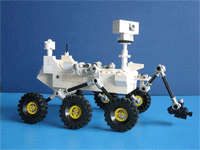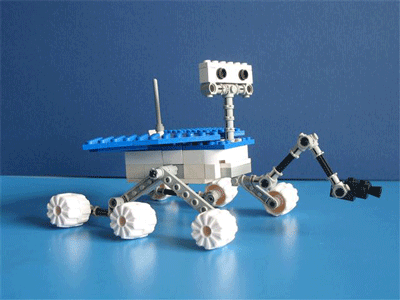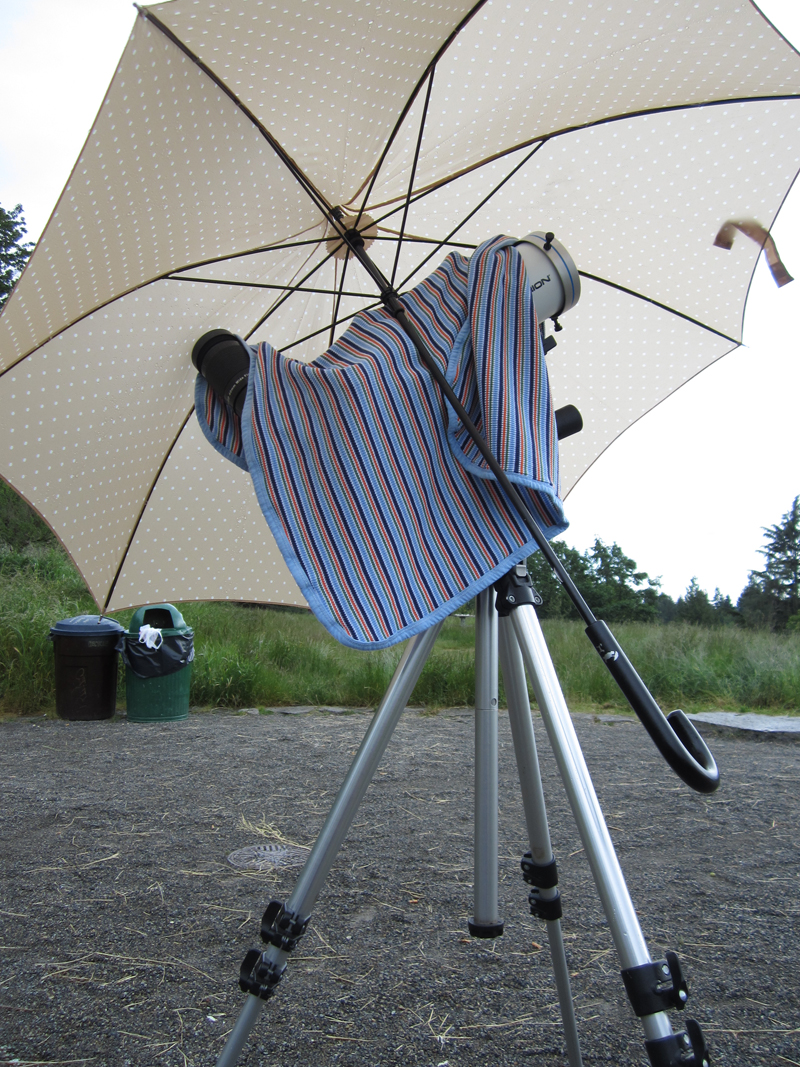 NASA vs. The Olympics–Inspiring or Ho-Hum?
NASA vs. The Olympics–Inspiring or Ho-Hum?
So, I completely disagree with this guy.
My coworker sent me this (I’ve paraphrased slightly so it reads better here):
Alice-
I read this story this morning:
[…] It’s essentially our mission statement in a nutshell: inspire. Something NASA, sadly isn’t doing so well these days, at least according to this writer. But this article is great! The comparison to the Olympics is superb. From 200 million miles away! [What would you say about this] in 140 characters or so?
S
As I said, I completely (and respectfully) disagree with him (the author, not my coworker).
It might be because I’m on the “inside” as a space-and-astronomy educator, but … I don’t think that NASA is failing at motivating or inspiring us. People still go “AAAAAAAAAWESOME” whenever I mention NASA. They are so pumped to hear about the latest and greatest from these geniuses, and they want to work for NASA (but don’t think they’ll ever be smart enough, which is partly my job to fix and a different problem than inspiration).
I think the perceived lack of inspiration is simply (as has been said before) a product of the decade plus the lack of people in space doing big brand new things… i.e. the fact that we aren’t in a to-the-pain space race with the USSR and that we aren’t having people put their feet down on new worlds or at new distances from our tiny island oasis. Those two things make NASA’s missions just a little harder to relate to than they were in the 60s.
The Olympics are a competition with other nations, and we have a good chance of losing at a lot of those races. With NASA we’re kind-of winning a sweep of all the “interplanetary medals,” with a few here and there being sprinkled out to other countries. It’s not quite as exciting to watch a race when you know who will win—that’s why network news suppresses the Olympic coverage until primetime in any given timezone.
That said, turn on NASA TV from your computer this weekend, on Sunday at 10:30pm Pacific time, for the nail-biting-est race of them all as our sedan-sized rover touches down on Mars… via a clothesline tether to a rocket-powered hovercraft. Hopefully all goes as planned and we’ll win this medal too. We’re not competing against another country for this, we’re competing against gravity.
And gravity usually wins.
 Mars Landing Watch at The Kenney
Mars Landing Watch at The Kenney
On Sunday, August 5th at 10:31pm (Pacific Time) the newest Mars rover, Curiosity, will touch down on the red planet. I’m going to be hosting a landing “watch” at the Kenney, where we can all watch the folks in Mission Control bite their nails and wait for the signal telling us that Curiosity has landed safely.
- When: Sunday, August 5th at 10:31pm (Pacific Time)
- Come around 10 to get settled.
- Where: The Kenney, just down the street from my usual solstice gatherings.
- 7125 Fauntleroy Way SW, Seattle WA 98136-200
- Enter through the main doors and follow directions to the event
- Who: Everyone welcome, as usual.

For the seven minutes of landing, Curiosity is completely out of radio contact and must execute the landing entirely autonomously (with no interference from people)
What should you expect?
Technical difficulties on our end, hopefully only minor ones on NASA’s side.
We’re going to turn on the internet and NASA TV and watch it together. Think Superbowl Party, Martian-Style!
Most of what we’ll see is interviews with the scientists who put Curiosity together, followed by some intense waiting while we hope for the signal from Mars to get through. We’ll talk through an animation of the landing sequence as it should go, as well as discussing the obvious points where things might fail. If we’re lucky we’ll have a photo from Mars by 11:30pm, or at least confirmation that the landing was successful, but if not then it might be several more hours. At 11:30pm I’ll be sending you all home to your own computers to wait for further images. (You’re welcome to meet up with me on Twitter @AlicesAstroInfo because I’ll certainly be staying up a while longer).
I’ll be there to answer questions, and I might have door prizes. Maybe, no promises.
If you need something to tide you over until then, to get a taste of the suspense, watch JPL’s 7 Minutes of Terror video. It’s AWESOME.
This event is my part of NASA’s Volunteer Solar System Ambassador program, and thanks to West Seattle Blog for publicizing the last few! Thanks ever so much to The Kenney for volunteering their space to do this, I hope a lot of their community comes too.
Everyone is welcome, see you there!
Other Opportunities
If you can’t make it to mine, Museum of Flight is also hosting a landing-watch. Their event is called “Mars-Fest” and has lots more going on throughout the evening.
Pacific Science Center Track for Earth and Space Science Achievement Discovery Corps youth will be hosting a “delayed-live” landing watch at 12:30pm on Monday, August 6th. This is for anyone who doesn’t want to stay up late to watch it. We’ll have a “real-time” video of the landing – with the animations, interviews, and waiting intact – and we’ll watch it together as if it is live. It’ll be just like a live landing watch, except the landing will already be done.
![]()
~ A l i c e !
 Mars Rover Rocker-Bogie Differential
Mars Rover Rocker-Bogie Differential
Today’s is a guest post, brought to you by my father, engineer, physicist, computer programmer, and Lego, Mars, and animation enthusiast: Keith Enevoldsen. If you’re not caught by the title of the post, scroll down and look at the pictures… then scroll back up and read the rest of the article because it is fascinating stuff! (P.S. He has a website full of awesome science stuff too!)
![]()
~ A l i c e !
The Rocker-Bogie
All the Mars rovers have six wheels and use a rocker-bogie suspension system to drive smoothly over bumpy ground. The rocker-bogies are easy to see in pictures of the rovers (see pictures below). There is one rocker-bogie assembly on each side of the rover. The rocker is the larger link that connects to the rover body (the chassis) in the middle (at the rocker pivot), has a wheel on the front, and connects to the bogie in the back. The bogie is the smaller link that connects to the rocker in the middle (at the bogie pivot), and has wheels at both ends. Each of the six wheels has its own motor.
The Differential
It is not so easy to see and understand how the rocker-bogie mechanism keeps the body level. What prevents the rover body from tipping all the way forward or backward around the rocker pivots? If you build a model rover and you attach the rockers to the body with an axle or two pivot pins, the body will tip forward or backward until it hits the ground! In the real rovers the two rockers connect to each other and to the body through a mechanism called a differential. The differential is what keeps the body level. Relative to the body, when one rocker goes up, the other rocker goes down. Relative to the ground, the body angle is halfway between the angles of the two rockers. That’s cool, but how does it work? The different rovers use different mechanisms: a differential gearbox or a differential bar.
Differential Gearbox
The Mars Pathfinder (Sojourner) and Mars Exploration Rovers (Spirit and Opportunity) use differential gearboxes.
The gearbox is inside the rover body, so you never see it. No wonder it is hard to figure out how it works! In my Lego model rover shown here, I use a simple three-gear differential. Two gears connect to the two rockers and the third (middle) gear connects to the body. If you hold the model rover body steady in midair and tilt one rocker up, the gears will turn and the other rocker will tilt down (see the animations below).
The real Mars Exploration Rovers use more complicated gearboxes with more gears but they are functionally equivalent to this simple three-gear differential.
Differential Bar
The Mars Science Laboratory (Curiosity) uses a differential bar. This is the big black bar that you see across the deck of the rover.
The middle of the bar is connected to the body with a pivot and the two ends are connected to the two rockers through some short links. If you hold the model rover body steady in midair and tilt one rocker up, one end of the bar will go back, the other end will go forward, and the other rocker will tilt down (see the animations below).
The Mars Exploration Rovers did not use a differential bar because it would interfere with the solar panels. But the Mars Science Laboratory does not have that problem because it is nuclear powered and has no solar panels.
Animations
Animations of a Rocker-Bogie with a Differential Gearbox
Mars Exploration Rover (Spirit and Opportunity)
Body held steady in midair:
Wheels on the ground:
Animations of a Rocker-Bogie with a Differential Bar
Mars Science Laboratory (Curiosity)
Body held steady in midair:
Wheels on the ground:
No Springs
The rocker-bogie mechanism has no springs. The absence of springs helps it keep all six wheels on the ground with approximately equal pressure on each wheel. This is a good thing when you are driving on sand!
Want More? (and References)
“Mars Exploration Rover Mobility Assembly Design, Test and Performance”, JPL
“A Capable and Temporary Test Facility on a Shoestring Budget: The MSL Touchdown Test Facility”, JPL
I hope you enjoyed my dad’s post. He sure had fun figuring out those mechanisms and creating them out of Lego!
I’ll be posting a Curiosity-landing-“watching” event here very soon.
![]()
~ A l i c e !
 Summer Solstice Sunset Watch 2012
Summer Solstice Sunset Watch 2012
It’s time for the 13th seasonal sunset watch!!
- When: Wednesday, June 20 at 9:01pm (so come at 8:45pm)
- Actual sunset is supposed to be at 9:11, but at the summer solstice we noticed that the Sun set about 10 minutes earlier than the USNO says it does, so I’ve moved the time of our sunset watch up so we don’t miss it. In Autumn the timing seemed to line up correctly – what will it do this time?
- Where: Solstice Park – all the way up the hill from the tennis courts (or, if you’re not in Seattle, wherever you have a view of the western horizon!)
- Who: Everyone welcome, as usual.
Come watch the summer solstice sunset at Solstice Park in West Seattle on Wednesday the 20th. We’ll see if the sunset lines up with the placed marker. I’ll be there even if it is cloudy because sometimes the Sun peeks through just as it begins to set, but if it is driving rain or sleet I’m staying home with some hot tea!
If you’re interested – here’s the timing of various celestial events from Seattle, courtesy of the U.S. Naval Observatory Astronomical Applications Department:
Sun and Moon Data for One Day
The following information is provided for Seattle, King County, Washington (longitude W122.3, latitude N47.6):
Wednesday 20 June 2012 Pacific Daylight Time
SUN
Begin civil twilight 4:31 a.m.
Sunrise 5:11 a.m.
Sun transit 1:11 p.m.
Sunset 9:11 p.m.
End civil twilight 9:52 p.m.MOON
Moonset 9:14 p.m. on preceding day
Moonrise 6:22 a.m.
Moon transit 2:11 p.m.
Moonset 9:53 p.m.
Moonrise 7:24 a.m. on following dayPhase of the Moon on 20 June: waxing crescent with 1% of the Moon’s visible disk illuminated.
New Moon on 19 June 2012 at 8:03 a.m. Pacific Daylight Time.
This event is my part of the NASA’s Solar System Ambassador program, and thanks to West Seattle Blog for publicizing the last few!
Everyone is welcome, see you there!
![]()
~ A l i c e !
 Transit of Venus — Seattle Report (Yes, we saw it!)
Transit of Venus — Seattle Report (Yes, we saw it!)
It was cloudy and raining here in West Seattle. I gotta say though, perseverance won out. We had three “sun breaks.” The first two almost didn’t count the clouds were still so thick, but we did see the Sun. Everyone else saw Venus during the first break, but I didn’t see it until the second break. Then we had a good one about 10 minutes long about halfway through the event.
Photos
Photo (c) 2012 Jason Ayres Gift Enevoldsen (please ask permission before copying)
Photo by Spencer Laube
We spent hours waiting in the rain.
Yes that’s an umbrella over the telescope.
But, we did see it!
Want More?
And yes, I owe you photos from the eclipse too. My friend Dave Ingram hosted the viewing here at Solstice Park while I gallivanted off to California. It was socked in up here, but beautiful in Redding, CA.
![]()
~ A l i c e !
 Transit of Venus Viewing – Solstice Park
Transit of Venus Viewing – Solstice Park
The last transit of Venus in your lifetime will happen on Tuesday, June 5 (here in Seattle). Come to Solstice Park and share the experience. NEVER, EVER, EVER look directly at the Sun. Even when there is something cool to see. You risk damaging your eyes. To find safe ways to observe please visit this website. Sunglasses are not enough. Build a pinhole projector instead.
- When: Tuesday June 5, 2012 at 3:06pm to 9:03pm
- Where: Solstice Park – all the way up the hill from the tennis courts (or, if you’re not in Seattle, wherever you have a view of the Sun! Go to this website to find the times for your location.)
- Who: Everyone welcome, as usual.
What is it?
The transit of Venus is when Venus passes in front of the Sun from the point of view of the Earth. In some ways it is like an eclipse, but since Venus is so far away it will look like a small dark dot on the face of the Sun.
Visibility from Seattle
Start: 3:06pm
Max: 6:27pm
SUNSET: 9:03pm (You can’t see the rest)
If you’re interested – here’s the timing of various celestial events on Saturday from Seattle, courtesy of the U.S. Naval Observatory Astronomical Applications Department:
Sun and Moon Data for One Day
The following information is provided for Seattle, King County, Washington (longitude W122.3, latitude N47.6):
Tuesday 5 June 2012 Pacific Daylight Time
SUN
Begin civil twilight 4:33 a.m.
Sunrise 5:13 a.m.
Sun transit 1:08 p.m.
Sunset 9:03 p.m.
End civil twilight 9:43 p.m.MOON
Moonrise 9:36 p.m. on preceding day
Moon transit 2:03 a.m.
Moonset 6:33 a.m.
Moonrise 10:28 p.m.
Moonset 7:45 a.m. on following dayPhase of the Moon on 5 June: waning gibbous with 97% of the Moon’s visible disk illuminated.
Full Moon on 4 June 2012 at 4:12 a.m. Pacific Daylight Time.
This event is my part of the NASA’s Solar System Ambassador program, and thanks to West Seattle Blog for publicizing the last few!
Everyone is welcome!
![]()
~ A l i c e !
 Transit of Venus – Tuesday, June 5, 2012
Transit of Venus – Tuesday, June 5, 2012
Transit of Venus—Tuesday, June 5, 2012
There is a transit of Venus in early June. Venus will pass between the Earth and the Sun, and appear as a small dot slowly crawling across the face of the Sun.
|
Images from http://transitofvenus.nl/wp/where-when/local-transit-times/ |
Viewing Safety
Never look directly at the Sun. Safe viewing is paramount. Always use appropriate safety equipment to view the Sun. This can be:
- Eclipse glasses (available at the Pacific Science Center Store and www.rainbowsymphony.com)
- #14 Welders goggles
- A pinhole projector (make: http://www.exploratorium.edu/eclipse/how.html)
Do not use stacked sunglasses, smoked glass, or rely on cloudcover to protect you.
Frequently Asked Questions
Some Diagrams
Links
Where can I watch it from Seattle?
Pacific Science Center Courtyard – http://www.pacificsciencecenter.org/Education/Programs/join-us-for-two-major-celestial-events
Solstice Park in West Seattle – http://www.alicesastroinfo.com/2009/06/solstice-park-west-seattle/
What time should I look from another city?
http://transitofvenus.nl/wp/where-when/local-transit-times/
When is sunset for another city?
http://aa.usno.navy.mil/cgi-bin/aa_pap.pl
Oh no! It’s cloudy!
- Live broadcast http://www.exploratorium.edu/venus/
Give me more data!
http://www.transitofvenus.org/
http://eclipse.gsfc.nasa.gov/OH/transit12.html
 Annular Solar Eclipse – Sunday May 20, 2012
Annular Solar Eclipse – Sunday May 20, 2012
There is a partial annular solar eclipse this Sunday. It’s visible from Seattle. A solar eclipse is when the Moon moves between the Earth and the Sun. A total eclipse is when, from this position, the Moon completely blocks our view of the Sun. An annular eclipse is when the Moon is just a little farther away, and so although it is completely in front of the Sun, it doesn’t completely block our view, we can still see a ring of Sun around the edge of the Moon. For this eclipse the most anyone will be able to see is an annular eclipse.
|
Images from Stellarium |
Viewing Safety
Never look directly at the Sun. Safe viewing is paramount. Always use appropriate safety equipment to view the Sun. This can be:
- Eclipse glasses (available at the Pacific Science Center Store and www.rainbowsymphony.com)
- #14 Welders goggles
- A pinhole projector (make: http://www.exploratorium.edu/eclipse/how.html)
Do not use stacked sunglasses, smoked glass, or rely on cloudcover to protect you.
Frequently Asked Questions
| Visibility from Seattle
Start: 5:01pm Max (82%): 6:17pm Finish: 7:25pm Sunset: 8:47pm |
Visibility from Redding, CA
Start: 5:10pm Max (96%): 6:28pm End: 7:35pm Sunset: 8:29pm |
When was the last/next one visible from Seattle?
(next one 2-5 yrs) 1994 – 51% 2014 – 64% 2000 – 30% 2017 – 93% 2000 – 36% 2023 – 85% 2001 – 37% 2084 – 93% 2002 – 48% full annular! (last one 10 yrs ago) |
Some Diagrams
Links
Where can I watch it from Seattle?
Pacific Science Center Courtyard – http://www.pacificsciencecenter.org/Education/Programs/join-us-for-two-major-celestial-events
Solstice Park in West Seattle (bring your own viewing equipment) – http://www.alicesastroinfo.com/2012/05/partial-solar-eclipse-viewing-2012-solstice-park/ –
What time should I look from another city? http://eclipse.gsfc.nasa.gov/SEgoogle/SEgoogle2001/SE2012May20Agoogle.html (“Magnitude” is the percent coverage: 0.82 means 82% coverage)
When is sunset for another city?
http://aa.usno.navy.mil/cgi-bin/aa_pap.pl
Oh no! It’s cloudy!
- Live broadcast from Japan at 2pm Seattle time: http://www.panasonic.net/eclipselive/
- Check nasa.gov for more live broadcast links
Give me more data!
http://eclipse.gsfc.nasa.gov/eclipse.html
http://eclipse.gsfc.nasa.gov/JSEX/JSEX-index.html
http://eclipse.gsfc.nasa.gov/OH/OH2012.html#SE2012May20A
http://eclipse.gsfc.nasa.gov/OH/OHfigures/OH2012-Fig01.pdf
 Partial Solar Eclipse Viewing 2012 – Solstice Park
Partial Solar Eclipse Viewing 2012 – Solstice Park
Did you know there’s going to be a partial solar eclipse visible from Seattle in just over a week? Come to Solstice Park and share the experience. NEVER, EVER, EVER look directly at the Sun. Even when it is partially eclipsed. You risk damaging your eyes. To find safe ways to observe please visit this website. Sunglasses are not enough. Build a pinhole projector instead.
- When: Sunday May 20, 2012 at 5:01pm-7:25pm (maximum eclipse is at 6:17pm)
- Where: Solstice Park – all the way up the hill from the tennis courts (or, if you’re not in Seattle, wherever you have a view of the Sun! Go to this website to find the times for your location.)
- Who: Everyone welcome, as usual.
This is a partial annular solar eclipse. This is the first solar eclipse visible from Seattle in ten years.
Unfortunately, I will not be in attendance this time, but I will be around for the June 5 Transit of Venus. I am simply facilitating this gathering from afar for the solar eclipse. I’m hoping to find an astronomy friend to show up and talk about safe solar viewing (anyone?).
If you’re interested – here’s the timing of various celestial events on Saturday from Seattle, courtesy of the U.S. Naval Observatory Astronomical Applications Department:
Sun and Moon Data for One Day
The following information is provided for Seattle, King County, Washington (longitude W122.3, latitude N47.6):
Sunday
20 May 2012 Pacific Daylight TimeSUN
Begin civil twilight 4:48 a.m.
Sunrise 5:25 a.m.
Sun transit 1:06 p.m.
Sunset 8:47 p.m.
End civil twilight 9:25 p.m.MOON
Moonset 7:54 p.m. on preceding day
Moonrise 5:11 a.m.
Moon transit 12:58 p.m.
Moonset 8:52 p.m.
Moonrise 5:50 a.m. on following day
This event is my part of the NASA’s Solar System Ambassador program, and thanks to West Seattle Blog for publicizing the last few!
Everyone is welcome!
![]()
~ A l i c e !
 Spring Equinox Sunset Watch 2012
Spring Equinox Sunset Watch 2012
It’s time for the 12th seasonal sunset watch (We’re at 3 years of these, folks)!!
- When: March 19, 2012 at 7:05pm (so come at 6:45pm)
- Actual sunset is supposed to be at 7:22, but at the summer solstice we noticed that the Sun set about 10 minutes earlier than the USNO says it does, so I’ve moved the time of our sunset watch up so we don’t miss it. I added another 5 minutes for the tall trees of Lincoln Park blocking our view. In Autumn the timing seemed to line up correctly – what will it do this time?
- Where: Solstice Park – all the way up the hill from the tennis courts (or, if you’re not in Seattle, wherever you have a view of the western horizon!)
- Who: Everyone welcome, as usual.
Come watch the spring equinox sunset at Solstice Park in West Seattle on Monday the 19th. We’ll see if the sunset lines up with the placed marker (it did for summer, but we weren’t sure in autumn or winter). I’ll be there even if it is cloudy because sometimes the Sun peeks through just as it begins to set, but if it is driving rain or sleet I’m staying home with some hot tea!
If you’re interested – here’s the timing of various celestial events on Saturday from Seattle, courtesy of the U.S. Naval Observatory Astronomical Applications Department:
Sun and Moon Data for One Day
The following information is provided for Seattle, King County, Washington (longitude W122.3, latitude N47.6):
Monday 19 March 2012 Pacific Daylight Time
SUN
Begin civil twilight 6:42 a.m.
Sunrise 7:13 a.m.
Sun transit 1:17 p.m.
Sunset 7:22 p.m.
End civil twilight 7:52 p.m.MOON
Moonset 3:40 p.m. on preceding day
Moonrise 5:38 a.m.
Moon transit 11:08 a.m.
Moonset 4:47 p.m.
Moonrise 6:02 a.m. on following dayPhase of the Moon on 19 March: waning crescent with 8% of the Moon’s visible disk illuminated.
New Moon on 22 March 2012 at 7:38 a.m. Pacific Daylight Time.
This event is my part of the NASA’s Solar System Ambassador program, and thanks to West Seattle Blog for publicizing the last few!
Everyone is welcome, see you there!
![]()
~ A l i c e !































